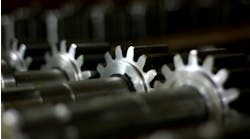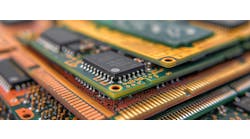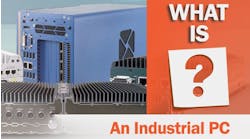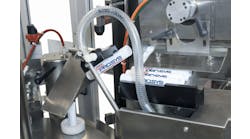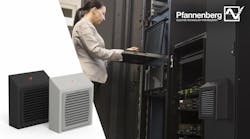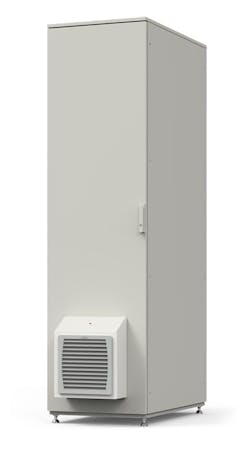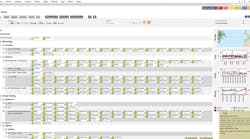Latest from Learning Center
Protecting IT Components on the Manufacturing Floor
Dangers of Overheating
Paradoxically, the enclosures that isolate the electronics from harmful substances also contribute to a different hazard—overheating. Thermal management is critically important to extend components’ service life and to avoid catastrophic failures, repair and maintenance costs, and the opportunity cost of process downtime.
Electronics are typically most efficient in an environment where the humidity is low and the temperature is approximately 95°F. As the temperature in an enclosure rises it can have a lasting effect on the electronics. Tests have shown that an increase in temperature of as little as 18°F shortens the life expectancy of electrical components by more than 50%.
Computer components are especially sensitive to heat and should be kept below 104°F, compared to a variable frequency drive, for example, which typically are listed as allowing a maximum temperature of 122°F.
A variety of cooling methods are available. Two of the most common are Forced Convection and Closed-Loop Cooling.
Forced Convection “Filter Fans”
Convections methods take advantage of ambient air when the temperature surrounding the enclosure is moderate and consistent. Natural convection is the process of hotter and therefore less dense air rising, and colder, denser air to sink under the influence of gravity, which consequently results in the transfer of heat. With the use of louvers or grills with filters, cooler ambient air can be allowed to enter the enclosure near the bottom and hotter air can be allowed to escape near the top of the enclosure. However, this natural convection method alone usually provides less cooling effect than is necessary for today‘s components.
Forced convection systems, commonly known as “filter fans,” employ fans to augment and boost the effect of natural convection. The cooler ambient air is drawn into the enclosure through a filter in the lower part of the enclosure and warmer air is exhausted above, also propelled through a filter. If the fans are properly sized, a slight positive pressure builds up inside the cabinet in comparison to the ambience, so that only filtered air flows into the enclosure. Forced convection systems can also be set up with a single fan, either pressurizing the system by propelling air into the system or drawing air at the exhaust.
Filter fans have an additional cooling benefit in addition to removing heat from the enclosure: they also cause air circulation inside the enclosure which mitigates against the occurrence of hot spots that are particularly hazardous for sensitive electronics.
Such devices generally meet the heat removal needs of typical electronic equipment in environments where the cooling load of the electrical components and the ambient temperature are within the acceptable range (the temperature rise inside the enclosure would be limited to roughly +10 Kelvin rise above ambient).
Therefore, filter fans are widely deployed in climate-controlled manufacturing environments, where the ambient temperature is moderate (65-80°F) and consistent.
However, because ambient air flows through filters into the enclosure, these forced convection systems are classified as open-loop cooling and do not provide adequate protection in especially harsh environments involving washdown requirements, heavy particulate matter or the presence of chemicals capable of damaging electrical components.
Closed-Loop Cooling
In environments where ambient air and moisture must be kept out of the cabinets (NEMA 4 environments), closed-loop cooling is required. These systems consist of two separate circulatory systems that keep the ambient air from mixing with the air in the enclosure: One system seals out the ambient air, cooling and re-circulating clean, cool air throughout the enclosure. The second system uses ambient air or water to remove and discharge the heat.
Typically, these systems employ an air conditioning system, with a compressor and a refrigerant that cools an evaporator coil placed inside the compartment that circulates air from within the enclosure. In the separate compartment that is exposed to the ambient air, the refrigerant flows through a condenser to discharge heat.
This approach has the advantage of a closed-loop system, isolating the electronic components from the outside air, but because of the compressor, it is more expensive to purchase and it consumes considerably more energy, and has higher maintenance and repair cost.
Externally-Mounted Filter Fans Maximize Rack Space
Filter fans are a great solution—simple, effective, and economical—for environments with moderate, consistent ambient temperatures that are free of corrosive, oily contaminants or other hazards requiring special protection.
Filter fans have been widely installed in electronics enclosures for decades, but a problem has emerged as the enclosures are increasingly used for distributed IT systems. Cabinets are being filled to capacity with racks of IT components, leaving little or no room for cooling systems. Often the cabinets have been designed, and the racks are filled, without thermal management in mind.
Unfortunately, the traditional design of all filter fans placed the fan in housing that protrudes into the interior of cabinets to achieve a minimal profile on the exterior where the filter is accessed.
This design limits the options of where the filterfan can be placed, depending on the location of the rails in the cabinet, and sometimes the arrangement of the rails makes the installation of a filter fan impossible. Even when a traditional filter fan could be installed, it significantly limits the usable space within the cabinet. To take advantage of the benefits of filter fans, valuable rack space is sacrificed.
In response, a new category has been created, specifically designed for electronics enclosures used for IT components—externally-mounted filter fans. These so-called “zero-protrusion” filter fans house the fan and the filter on the outside of the cabinet wall. These systems use the same filters and have the same cooling capacity as traditional filter fans, in a product specifically designed for space-restricted locations and for installation in IT cabinets, without sacrificing rack space. Installing the new systems is actually easier than the traditional design and new installations and retrofits us the same standard cutouts in the cabinet wall.
Fortunately, with this new option, it is now possible for IT cabinets to fully utilize their rack space, on the manufacturing floor and in other space-restricted locations, while keeping their cool.
